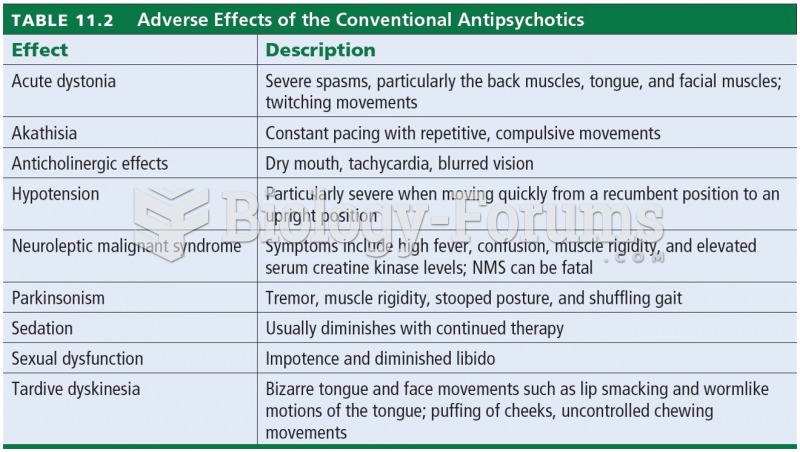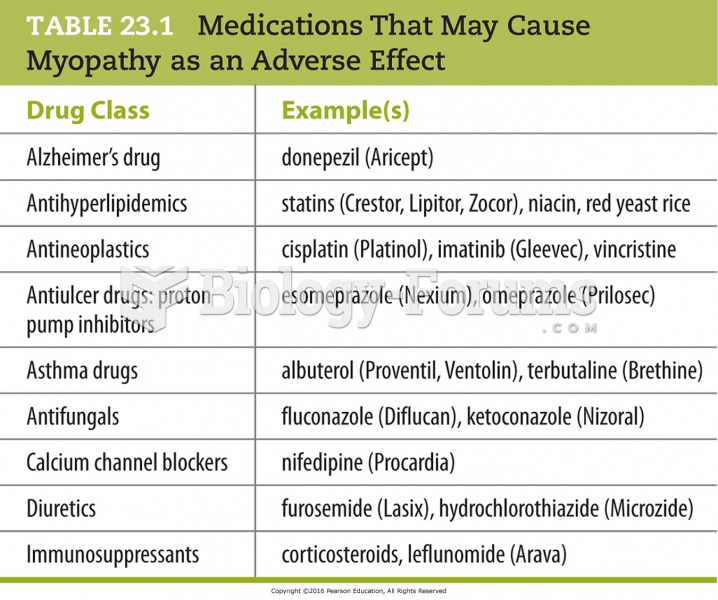Answer to Question 1
1
Rationale 1: Nausea is a common adverse effect of darunavir (Prezista) and similar protease inhibitors.
Rationale 2: Diarrhea, not constipation, is a common adverse effect of this medication.
Rationale 3: Dizziness is not a common adverse effect of this medication.
Rationale 4: Increased urinary output is not an adverse effect.
Global Rationale: Nausea is a common adverse effect of darunavir (Prezista) and similar protease inhibitors. Diarrhea, not constipation, is a common adverse effect of this medication. Dizziness is not a common adverse effect of this medication. Increased urinary output is not an adverse effect.
Answer to Question 2
3
Rationale 1: The Food, Drug, and Cosmetic Act prevents the marketing of drugs that have not been thoroughly tested prior to marketing. Drug companies are required to prove the safety and efficacy of any drug before it can be sold in the United States.
Rationale 2: The FDA Modernization Act is the largest reform effort of the drug review process since 1938.
Rationale 3: The Sherley Amendment was passed in 1912 to prohibit the sale of drugs labeled with false therapeutic claims intended to cheat the consumer.
Rationale 4: The Pure Food and Drug Act gives the government power to control the labeling of medicine.
Global Rationale: The Sherley Amendment was passed in 1912 to prohibit the sale of drugs labeled with false therapeutic claims intended to cheat the consumer. The Food, Drug, and Cosmetic Act prevents the marketing of drugs that have not been thoroughly tested prior to marketing. Drug companies are required to prove the safety and efficacy of any drug before it can be sold in the United States. The FDA Modernization Act is the largest reform effort of the drug review process since 1938. The Pure Food and Drug Act gives the government power to control the labeling of medicine.







